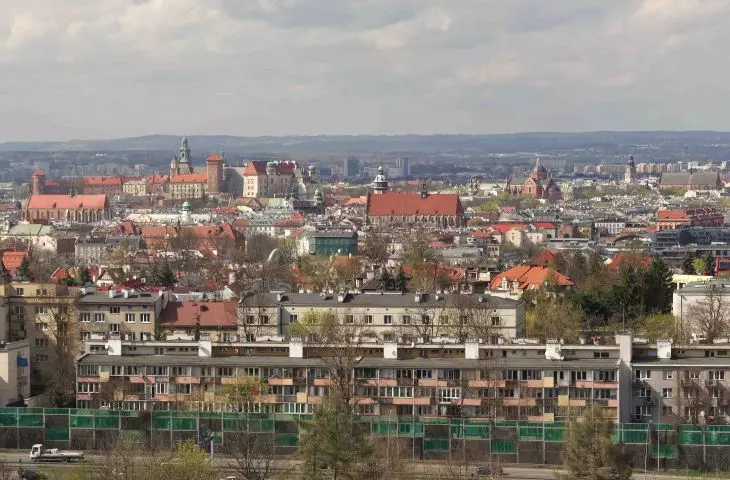Architects and urban planners have a great reason to be happy—they have finally succeeded in bringing ideas from their field into the canon of conspiracy theories. These days, this is the first sign that we are considering certain things seriously.
If we look at the circles of conspiracy theory proponents, as well as the journalists and influencers who fuel these theories, we notice an important factor—conspiracy theories always accompany major events and trends in the world.
The COVID-19 pandemic, the World Forum in Davos, the attack on the World Trade Center, 5G networks or the war in Ukraine—each of these topics has been linked to major world events or the introduction of technological innovations. Conspiracy theories arise on the basis of only things that are very popular, pertaining to everyday life or shaping public debate. Architects and urban planners can say for the first time in history—WE HAVE IT! The idea of a fifteen-minute city joins the canon of conspiracy theories, and this is, against all odds, a good sign.
Between criticism and conspiracy theory
I don't mean to describe the idea popularized by Carlos Moreno, whose interview you can read in the March issue of A&B(online version available for free). The reason I'm not describing it is that fanatical opponents of the 15-minute cities will respond at best with vulgarity or a weak meme—their openness to discussion decreases as the Dunning-Kruger effect increases. What caught my attention was the appearance of the 15-minute city in posts on Twitter, Facebook or other types of social media.
Influencer Wojciech Cejrowski, mostly known for his hatred of the shoe industry, compared the 15-minute city to feudalism in a Radio WNET broadcast, pointing out that „Klaus Schwabs” would not like it, suggesting that the government would be able to decide who could move around and who could not. On one of his Twitter accounts (he has two, in light and hard versions), he considered the authoritarian system in China, which requires facial scanning to recognize people, to be a 15-minute city.
Agnieszka Stelmach, a journalist for the PCH24.pl portal, ends her long argument supported by numerous examples of the implementation of urban policies close to him with the words „Central control is doing well,” pointing to the alleged deterioration of the quality of life in the creation of 15-minute cities. There is no lack of elements of overinterpretation in her article either—the issue of modeling cities and the behavior of its residents. The author also wove into the urban story issues of sexual orientation or ethnic diversity—a well-known factor of conspiracy theories today grouped around the camp of conservatives.
Not to be outdone is the chief opponent of urban activists, Lukasz Warzecha (who repeatedly misidentifies urban activism as supporters of public transportation and bicycles, rather than actors of space, including drivers), who believes that these actions aim to "trap people in the local gray area."
Among the hundreds of social media posts, we also find other terms such as slums, ghettos and even concentration camps. Due to their nature, let me skip mentioning them directly. Why is there so much anger and hatred towards this idea, and what is the source of these concerns?
theory good for today
Conspiracy theories grow out of fear, apprehension, and an aversion to change. All of this is fueled by distortions, half-truths and outright lies. Partial abandonment of certain habits is perceived as an attack on core values—if a city builds a woonerf instead of a two-lane road, know that something is going on. Criticism of 15-minute cities does not necessarily mean "foilism" at all.—One might as well debate whether such a solution will not repeat the history of Montessori schools, which were originally intended to level the playing field and give an adequate education to children regardless of their background, but today have become, in most cases, exclusive centers for children from the middle class and wealthy sections of society. Every idea is also fraught with flaws, but their analysis requires discussion—not lies and half-truths.
the road to understanding?
So how to conduct discussions on 15-minute cities? It is worth asking who is worth discussing with? Is someone who uploads a meme with a concentration camp a person who is open to arguments? Will someone who sees danger in making space available for cyclists or pedestrians understand the point of the idea? It all depends on who the message is aimed at. The solutions proposed by Carlos Moreno can be introduced as a revolution or an evolution. The method of small steps with small changes may not look spectacular, but it will certainly convince a wider range of people.
"Streamlining" the idea of a 15-minute city is worth taking as a good thing—it may be the first time in history that a certain urban planning idea has aroused such interest. The shortcoming of the whole situation, however, will be the constant attack on supporters of the ideas proposed by Moreno, which will replace a healthy field of discussion in many places. Instead, the answer to conspiracy theories should be proper education, promotion and discussion—showing the strengths of such public space formulas in response to meaningless comparisons. Not to convince the unconvinced, but so as not to forestall those who are yet to learn what a 15-minute city is. The battle for the „government of souls” continues!














